#Brighid's day
Text

40 notes
·
View notes
Text
Prayer to Brighid
You who breathes innovation,
and ignites that spark within us
You who forges with steel,
as well as with words
You who kindles the fires,
and stokes our passions high
Brighid, Lady of the Amber Forge,
I honour you.
#prayer a day#day 12#deity#brighid#bríde#Brigid#goddess#irish myth#irish mythology#prayer#poem#pagan#paganblr#paganism
36 notes
·
View notes
Text
How I’m Celebrating Imbolg
As a Brighid devotee, I thought I’d share how I’m spending Imbolg with my partner!
I’m personally celebrating the evening of January 31st through February 3rd! Most fire festivals were more than a one day event and I didn’t want to pack everything into 1 day anyways.
On January 31st, we put out our Brat Brídes, hanging white cloths on our door.
Then we candle painted! Using little tea lights, we painted with the hot wax onto some larger candles
I had my own flame tending shift so I finished that
Today, February First, we got all of our supplies for the day and went to the park to spend some time in nature while drinking our coffees. I found a dandelion to bring home for Brighid’s altar and also some rosemary!
Then we came home and started baking some bread, specifically Garlic Braided Bread and also made our own butter
We are preparing a bit of a feast, we got some apples and 3 different kinds of cheese (baking some brie!) to go with the bread along with some mashed potatoes.
Some bread and cheese will be offered to Brighid.
After we eat, we’re going to do some Imbolg divination spreads for the season ahead
Lastly for the night, we will make a Brighid’s doll (Brideog) and a Leaba Bhríde to put her in.
Tomorrow, February 2nd, we will be walking the bounds and grounds, doing some cleansing and cleaning and then some warding around our home.
Then we will be baking some Rosemary and Lemon Curd Tassies! (recipe below) We will offer one to Brighid as well.
On February 3rd, we will be meeting up with a friend to conclude our festivities
We’re going to go to a cemetery and commune with the spirits
Then we’re going to find some natural material for making Brighid’s Crosses and do them while we’re out!
Finally we’re going to go to a local plant store and buy a new houseplant, and plant our intentions for the season while potting it.
What’re you doing for Imbolg??

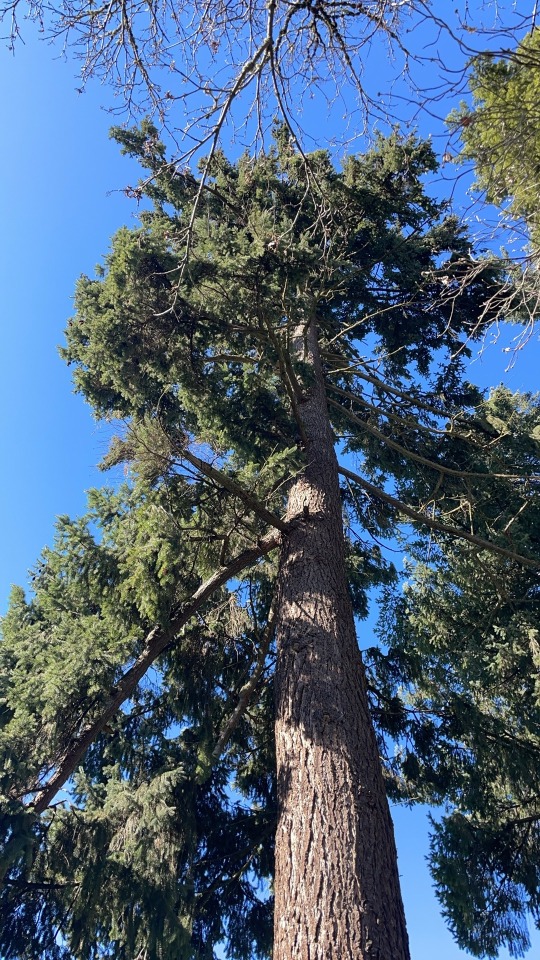

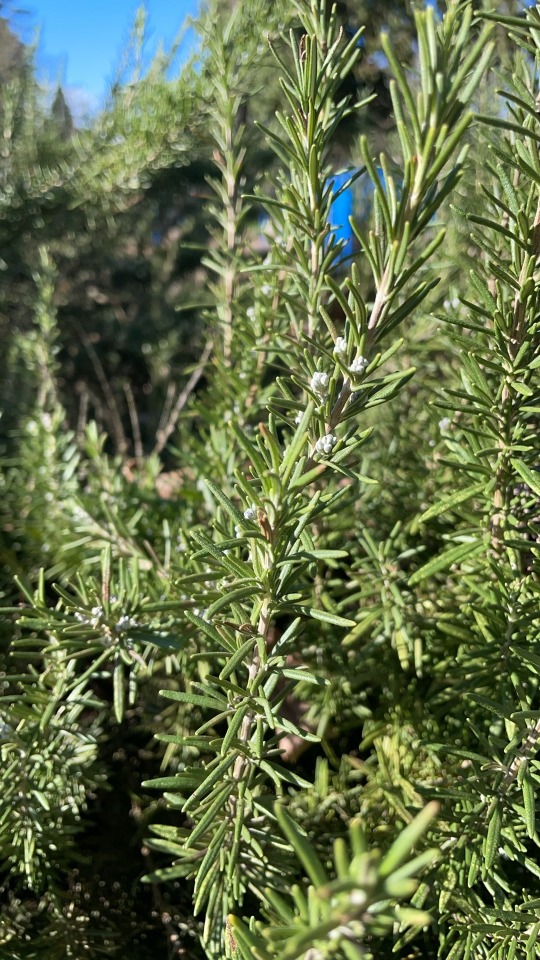
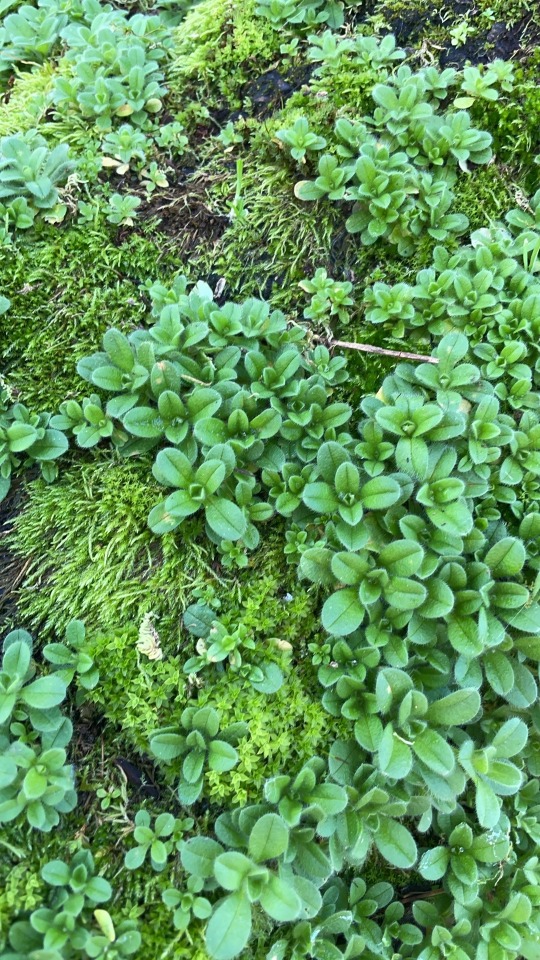
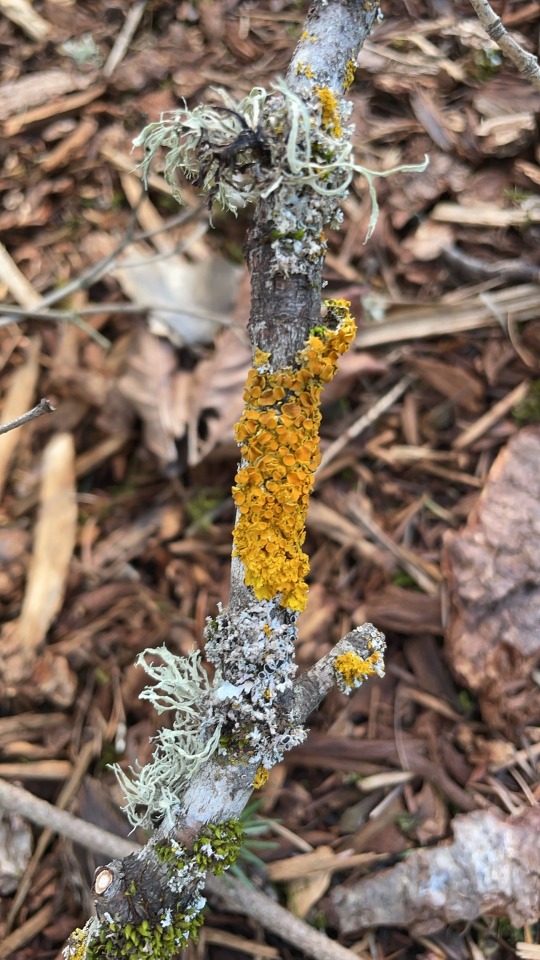
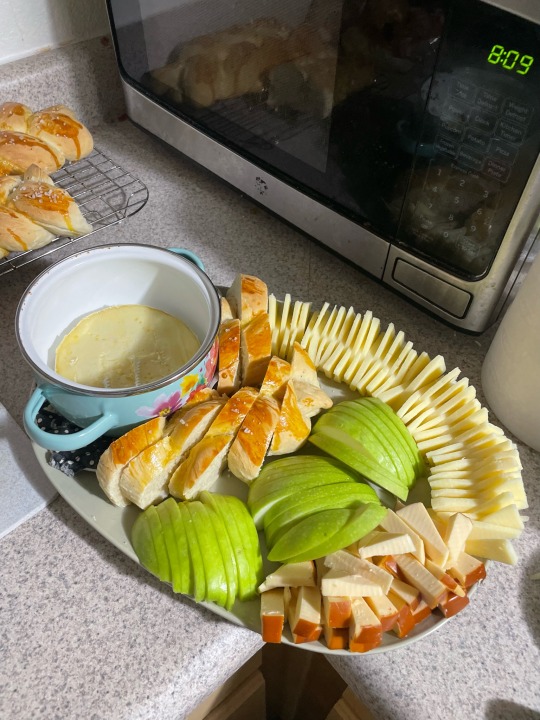
#Imbolg#Imbolc#Brighid#Brigid#Fire Festival#Brid#brighid deity#brighidine#Saint Brigid#Polytheism#Gaelpol#Irish Polytheism#Irish Paganism#Animism#Brighid’s Day#Brigid’s Day#st. brigid’s day#Paganism#Spirit Work#Kitchen Magick#Folk Magic#Deity Worship#Nature
3 notes
·
View notes
Text
youtube
January 28, 2024
This is lovely.
"Imbolc Altar Ambience ☀️❄️🕯️🐑 | Saint Brigid's Day | A Harbinger of Spring | ASMR" by The Dead of Night
#Imbolc#Ambience#Brigid#Saint Brigids Day#Brighid#witches#witchcraft#pagans of tumblr#paganism#Youtube
2 notes
·
View notes
Note
aline,
my love, are you well? it feels like forever and a day since we parted ways for only a few weeks, jin has to keep reminding me how long the days are! it seems like both my heart and mind are eager to see you again.. and i could never be one to disagree with both at once. i sincerely hope this letter finds you in good health, in good spirits, and under wonderful weather. that last one's very important, given they affect the first two. i included charms haze and i made, one for you and another for avalon— they're meant for travelers, as a source of good luck to see them back home safely. i hope to hear from you again soon, either through letter or, preferably, in person, but you know i adore your presence no matter its form.
love, lora
"Oh, Lora - thank you so very kindly for such lovely gifts and sentiments! I hope that the same can be true for you, too, regarding everything. Avalon also sends their regards - they're already attaching their charm to their glaive, in fact!
With any luck, this response will also get back to you swiftly - and in all honesty, I imagine that we'll be able to come back not too long after it arrives, hopefully! After all, I think we've finally managed to sort out where these Core Crystal thieves might be hiding, so, hopefully, we'll be able to get everything resolved here!
Thank you so very much once again for this letter, Lora. It really does mean a lot to me to hear from you, and especially to receive such a lovely gift as well. I can't wait to come back and see you again.. I really miss you when we can't be together. I'll see you soon, my love!
-Aline"
>w< I kept this one in my inbox for a couple of days so that I could use it to start the day off - I hope that that was alright
thank you very, very kindly for sending this in, friend
#heart of the void#selfshipping#letters from F/Os#love: knight of the people (lora)#selfship: to fight for what matters (lora/aline)#blanked on that one for a second. that's not a great sign#self‑insert: hope without courage (aline)#friend: shattered light (avalon)#out of the inbox#selfship asks#anon#albeit one I do believe I know =3#something to keep track of#for sad days#I like to think that this hypothetical time away from each other was when aline awakened ursula#despite it now being after midnight I will not tag this specifically with the birthday tag because it wasn't *for* that#''how does the traveller's charm stay on avalon's blade weapon'' the same way brighid's diary stays on her person =)#core crystal storage logic
1 note
·
View note
Text
Imbolc is the light at the end of the tunnel, the birth of the new spring. It is a small light, like a candle seen in the distance, because spring is still some distance away. It makes it only right to celebrate Imbolc with candles rather than torches or the blazing balefires that will mark our summer celebrations.

From Llewellyn's Sabbat Essentials: Imbolc; Rituals, Recipes, and Lore for Brigid's Day, published 2014; Carl Neal (My Ko-Fi Here)
#Llewellyn's Sabbat Essentials: Imbolc Rituals Recipes and Lore For Brighid's Day#Llewellyn's Sabbat Essentials#Imbolc: Rituals Recipes and Lore for Brigid's Day#Carl Neal#Quote
4 notes
·
View notes
Text
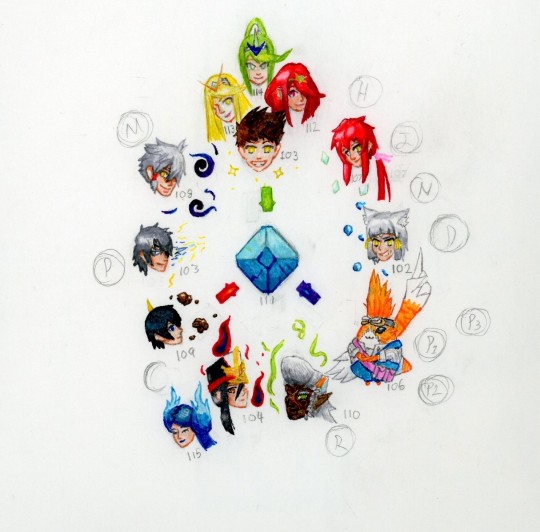
Today for you all on sapphic sunday is brighid!
1 note
·
View note
Text
Happy Imbolc!

1 note
·
View note
Text
February 2024 witch guide
Full moon: February 24th
New moon: February 9th
Sabbats: Imbolc-February 1st
February Snow Moon
Known as: Eagle Moon, Horning Moon, Solmonath Moon, Bear moon, Ice Moon, Wild Moon, Raccoon Moon, Big Winter Moon, Groundhog Moon, Quickening Moon, Storm Moon, Goose Moon, Hungry Moon & Red/Cleansing Moon
Element: Fire
Zodiac: Aquarius & Pisces
Nature spirits: House Faeries
Deities: Aphrodite, Brigid & Nut
Animals: Otter & Unicorn
Birds: Chickadee & Eagle
Trees: Cedar, laurel, myrtle & rowan
Herbs: Balm of Gilead, hyssop, myrrh, sage & spikenard
Flowers: Primrose
Scents: Heliotrope & wisteria
Stones: Amethyst, jasper, moonstone, obsidian, onyx , rose quartz, topaz & red zircon
Colors: Light blue & violet
Energy: Astral travel, banishing, beginnings, breaking bad habits, creativity expressiveness, empowerment, energy working to the surface, fertility, forgiveness, freedom, friendships, future plans, growth, healing, problem solving, purification, responsibility & science
February’s full Moon is a “Micromoon” this year. Think of this term as the opposite of a “Supermoon.” It simply means that the full Moon is at its farthest point from Earth (not the nearest point).
The explanation behind February’s full Moon name is a fairly straightforward one: it’s known as the Snow Moon due to the typically heavy snowfall that occurs in February. On average, February is the United States’ snowiest month, according to data from the National Weather Service. In the 1760s, Captain Jonathan Carver, who had visited with the Naudowessie(Dakota), wrote that the name used for this period was the Snow Moon, “because more snow commonly falls during this month than any other in the winter.”
Imbolc
Known as: Feast of Torches, Feast of Waxing Light, Oimele & Brigid's Day
Season: Winter
Symbols: Besoms, Brighid's crosses, candles, candle wheels, fertility symbols, fire, ploughs, priapic wands & white flowers
Colors: Black, brown, Earth tones, lavender, light green, orange, pink, red, white & yellow
Oils/Incense: Apricot, basil, bay, carnation, chamomile, cinnamon, dragon's blood, frankincense, heather, jasmine, myrrh, neroli, red sandalwood, sage, vanilla, violet & wisteria
Animals: Badger, cow, deer,groudhog, robin, sheep, snake, & swan
Mythical: Dragon
Stones: Amethyst, bloodstone, citrine, clear quartz, garnet, green tourmaline, hematite, iron, lodestone, onyx, red zircon, rose quartz, ruby, turquoise, yellow tourmaline
Food: Breads, chives, curries, dairy products, grains, garlic, herbal teas, honey cakes, lamb, muffins, onions, peppers, poppy seed cakes, pork, poultry, pumpkin seeds, raisins, scones, spiced wines & sunflower seeeds
Herbs/Plants: Angelica, ashleaf, balsam, basil, bay laurel, benzoin, blackberry, clover, coltsfoot, coriander, dragon's blood, garlic, heather, lemon, myrrh, rosemary, sage, vervain, wheat & witch hazel
Flowers: Celandine, chamomile, iris, rose hips, snowdrop, sunflower, tansy, violets, white flowers & yellow flowers
Goddesses: Anu, Aradia, Arianrhod, Artio, Athena, Branwen, Brigid, Danu, Februa, Gaia, Inanna, Juno, Selene, Sirona & Vesta
Gods: Aegus Mac Og, Bragi, Cupid, Dian Cecht, Dumuzi, Eros, Februus & Pax
Issues, Intentions & Powers: Activation/awakening, animals, beginnings, fertility, healing, hope, illumination, inspiration, light, pregnancy/childbirth, prophecy, transformation, well-being & youth
Spellwork: Air magick, banishings, candle spells, divination, fertility spells, prosperity & purification
Activities:
• Make & light white candles
• Clean/decorate your altar & consecrate your altar tools
• Go on a walk in nature & look for signs of spring
• Make a Brigid's Cross
• Have a feast with your family/friends
• Give thanks & leave offerings to the Earth
• Set intentions, reflect & look deeper into your goals for spring
• Start a bonfire
• Find Imboloc prayers & devotionals that bid farewell to the winter months, honor the goddess Brigid, as well as seasonal blessings for your meals, hearth, & home.
• Pepare plans for your upcoming garden
• Craft a priapic wand
• Spend time with children celebrating Imbolc by making crafts & or baking
• Practice divination & fire scrying
• Draw a cleansing ritual bath for yourself
• Meditate, reflect & say your farewells to winter
• Cleanse & clean your house to prepare for spring
• Create a Brídeóg: a doll of Brigid made of straw
• Make Bride's bouquet satchets & exchange as symbols of good luck and fertility
• Set aside food & or drinks as an offering to Brigid to invite her in your home
Imbolc is a Gaelic festival marking the beginning of spring. Most commonly it is held on January 31 – February 1, or halfway between the winter solstice & the spring equinox. The holiday is a festival of the hearth, home, a celebration of the lengthening days & the early signs of spring.
The word "imbolc" means "in the belly" and refers to the pregnancy of ewes at this time of year. The term "oimelc" means ewe's milk. Around this time of year, many herd animals give birth to their first offspring of the year or are heavily pregnant & as a result, they are producing milk. This creation of life’s milk is a part of the symbolic hope for spring.
Imbolc is mentioned in some of the earliest Irish literature and it is associated with important events in Irish mythology. It has been suggested that it was originally a pagan festival associated with the goddess Brigid and that it was Christianized as a festival of Saint Brigid, who herself is thought to be a Christianization of the goddess.
Some use Imbolc to celebrate the longer days which herald the return of Spring & The Goddess's recovery from giving birth to The Sun (The God) at Yule. The God & The Goddess are children symbolizing new life, new beginnings & new resurrections.
Related festivals:
• Groundhog Day- Is a tradition observed in the United States & Canada on February 2 of every year. It derives from the Pennsylvania Dutch superstition that if a groundhog emerges from its burrow on this day & sees its shadow, it will retreat to its den & winter will go on for six more weeks; if it does not see its shadow, spring will arrive early.
While the tradition remains popular in the 21st century, studies have found no consistent association between a groundhog seeing its shadow & the subsequent arrival time of spring-like weather.
•St. Brigid's Day- 1 February. It was originally Imbolc, the first day of spring in Irish tradition. Because Saint Brigid has been theorised as linked to the goddess Brigid, some associate the festival of Imbolc with the goddess. St. Brigid is the patroness saint (or 'mother saint') of Ireland. She is patroness of many things, including poetry, learning, healing, protection, blacksmithing, livestock & dairy production. In her honour, a perpetual fire was kept burning at Kildare for centuries.
A recent campaign successfully established her feast day as a national holiday in 2023.
• Chinese New Year- (February 10th) the festival that celebrates the beginning of a new year on the traditional��lunisolar Chinese calendar. In Chinese, the festival is commonly referred to as the Spring Festival,- marking the end of winter and the beginning of the spring season. Observances traditionally take place from Chinese New Year's Eve, the evening preceding the first day of the year, to the Lantern Festival, held on the 15th day of the year. The first day of Chinese New Year begins on the new moon that appears between January 21st & February 20th.
The Chinese New Year is associated with several myths and customs. The festival was traditionally a time to honour deities as well as ancestors. Within China, regional customs and traditions concerning the celebration of the New Year vary widely & the evening preceding the New Year's Day is frequently regarded as an occasion for Chinese families to gather for the annual reunion dinner.
It is also a tradition for every family to thoroughly clean their house, in order to sweep away any ill fortune & to make way for incoming good luck. Another custom is the decoration of windows & doors with red paper-cuts and couplets. Popular themes among these paper-cuts and couplets include good fortune or happiness, wealth & longevity. Other activities include lighting firecrackers & giving money in red envelopes.
• Candlemas- is a Christian feast day on February 2nd commemorating the presentation of Jesus at the Temple. It is based upon the account of the presentation of Jesus in Luke 2:22-40.
While it is customary for Christians in some countries to remove their Christmas decorations on Twelfth Night, those in other Christian countries historically remove them after Candlemas.On Candlemas, many Christians also take their candles to their local church, where they are blessed and then used for the rest of the year.
•Setsubun- (February 3rd) Is the day before the beginning of spring in the old calendar in Japan. The name literally means 'seasonal division', referring to the day just before the first day of spring.
Both Setsubun & Risshun are celebrated yearly as part of the Spring Festival (Haru matsuri ) in Japan. In its association with the Lunar New Year, Setsubun, though not the official New Year, was thought of as similar in its ritual & cultural associations of 'cleansing' the previous year as the beginning of the new season of spring. Setsubun was accompanied by a number of rituals & traditions held at various levels to drive away the previous year's bad fortunes & evil spirits for the year to come.
Other Celebrations:
• Lupercalia-
In ancient Rome, this festival was conducted annually on February 13th through 15th under the superintendence of a corporation of priests called Luperci. The origins of the festival are obscure, although the likely derivation of its name from lupus (Latin: “wolf”) has variously suggested connection with an ancient deity who protected herds from wolves and with the legendary she-wolf who nursed Romulus and Remus. As a fertility rite, the festival is also associated with the god Faunus.
to purify the city, promoting health & fertility.
Each Lupercalia began with the sacrifice by the Luperci of goats and a dog, after which two of the Luperci were led to the altar, their foreheads were touched with a bloody knife & the blood was wiped off with wool dipped in milk; the ritual required that the two young men laugh. The sacrificial feast followed, after which the Luperci cut thongs from the skins of the sacrificial animals & ran in two bands around the Palatine hill, striking with the thongs at any woman who came near them. A blow from the thong was supposed to render a woman fertile.
In 494 CE the Christian church under Pope Gelasius I forbade participation in the festival. Tradition holds that he appropriated the form of the rite as the Feast of the Purification (Candlemas), celebrated on February 2, but it is likely that the Christian feast was established in the previous century. It has also been alternately suggested that Pope Gelasius I replaced Lupercalia with St. Valentine’s Day, celebrated on February 14th, but the origin of that holiday was likely much later.
Sources:
Farmersalmanac .com
Llewellyn's Complete Book of Correspondences by Sandra Kines
Wikipedia
A Witch's Book of Correspondences by Viktorija Briggs
Encyclopedia britannica
Llewellyn 2024 magical almanac Practical magic for everyday living
#witchblr#wiccablr#paganblr#witchcraft#witch guide#February 2024#snow moon#Imbolc#witch community#witches of tumblr#tumblr witches#correspondences#grimoire#book of shadows#spellbook#traditional witchcraft#spellwork#witch tips#witch tumblr#beginner witch#baby witch#witchcore#Lupercalia#full moon#moon magic#GreenWitchcrafts#pagan#wicca#witch#witchy things
280 notes
·
View notes
Text
Blessed Solstice, to those who celebrate
I personally view holidays based around the sun as solarpunk. There's many ways to celebrate and this year I celebrated by:
Resting! It's the dark half of the year, we're naturally more tired and we are meant to do less in winter. I see the solstice as a time to embrace rest and relaxation. Remember, in a capitalist society resting when you need to is revolutionary
It's a day meant to revolve around community, spend time in your communities with friends, family, classmates, neighbours, etc.
Have a fire, this is a traditional practice I do every year. Since it's the shortest day of the year, I light a fire to honour the sun (and the Godess Brighid).
Have a (spell) bath. Cleansing is important in my spiritual practice, the winter solstice is the perfect time to cleanse and renew yourself for the year to come
Volunteering. As we talk about Christmas gifts and how to be sustainable in our gifts. Volunteering can be a gift to your community, a way of giving back and saying thanks
118 notes
·
View notes
Text

Bridget, Bright Goddess of the Gael
Talon Abraxas
Brigid was a goddess of the Tuatha Dé Danann. She was a daughter of the chief of the gods, The Dagda, and was known as a goddess of healers, poets, smiths, childbirth and inspiration. Her name means "exalted one". This article by Branfionn NicGrioghair explores the story of Brigid and the later Christian Saint, St. Brigid, who is still honoured to this day, especially in Faughart, her birthplace, and Kildare, where she founded a monastery.
Brigid is the Daughter of the Dagda, one of the more universal deities of the pagan Gaelic world. She is known as the Goddess of Healers, Poets, Smiths, Childbirth and Inspiration; Goddess of Fire and Hearth and a patron of warfare or Briga. Her soldiers were called Brigands. Her name means "Exalted One." She is also known as Brigantia, Brid, Bride, Briginda, Brigdu, and Brigit. She is said to lean over every cradle. The lore and customs have continued to this day regarding Brighid, more vividly than all the other Gaelic deities combined.
In the middle ages, Brigid is in many stories. In one she is the wife of Bres, the half-Fomorian ruler of the Tuatha Dé Danann. Their son, Ruadan, wounded the smith god Giobhniu at the second battle of Magh Tuireadh but he himself was slain in the combat. Brigid then went to the battlefield to mourn her son. This was said to be the first caoine (keening), or lament, heard in Ireland. Until recent time, it was a tradition to hire women to caoine at every graveside. In another story, Brighid was the wife of Tuireann and had three sons: Brian, Iuchar and Ircharba. In the tale, The Sons of Tuirean, these three killed the god Cian, father of Lugh Lámhfhada when he was in the form of a pig.
She was transformed by the Church of St. Brigid into St. Brigid about 453 C.E. Saint Brighid is known as the patroness of farm work and cattle, and protector of the household from fire and calamity. To this day, one of her most common names in Gaelic is Muime Chriosd, "Foster-Mother of Christ." St. Brigid was said to be the daughter of Dubthach, a Druid who brought her from Ireland to be raised on the Isle of Iona, sometimes called "The Druid's Isle."
By Branfionn NicGrioghair
56 notes
·
View notes
Text
GUYS GUYS WAIT I HAVE AN IDEA ??
So we know Lenore went kinda coocoo from Theo’s death from the tree, she was in a wheelchair, panic attacks all that stuff. Then Ms Gaslight Gatekeeper Girlboss shows up, they fall in love, Annabel leaves.
HERES THE GOOD STUFF
We know Lenore cut her hair and everything to become a man so she could stay with Annabel and marry her. SHE SET HER HOUSE ON FIRE WITH THE ETHER THE NURSES AND MAIDS WERE USING TO “CALM HER DOWN” OR BASICALLY KNOCK HER OUT OR DRUG HER.
I did my research for the lovely guy Edgar Allen Poe and his poem for Lenore, and figured out that Lenore, in the poem, had died from tuberculosis. What’s tuberculosis? A disease that affects your lungs, and that can only be transmitted through the air. I did more research and found the possible causes of tuberculosis, one is FIRE. The smoke can infect your lungs and you can develop tuberculosis. what did Lenore do? Set her house on FIRE.
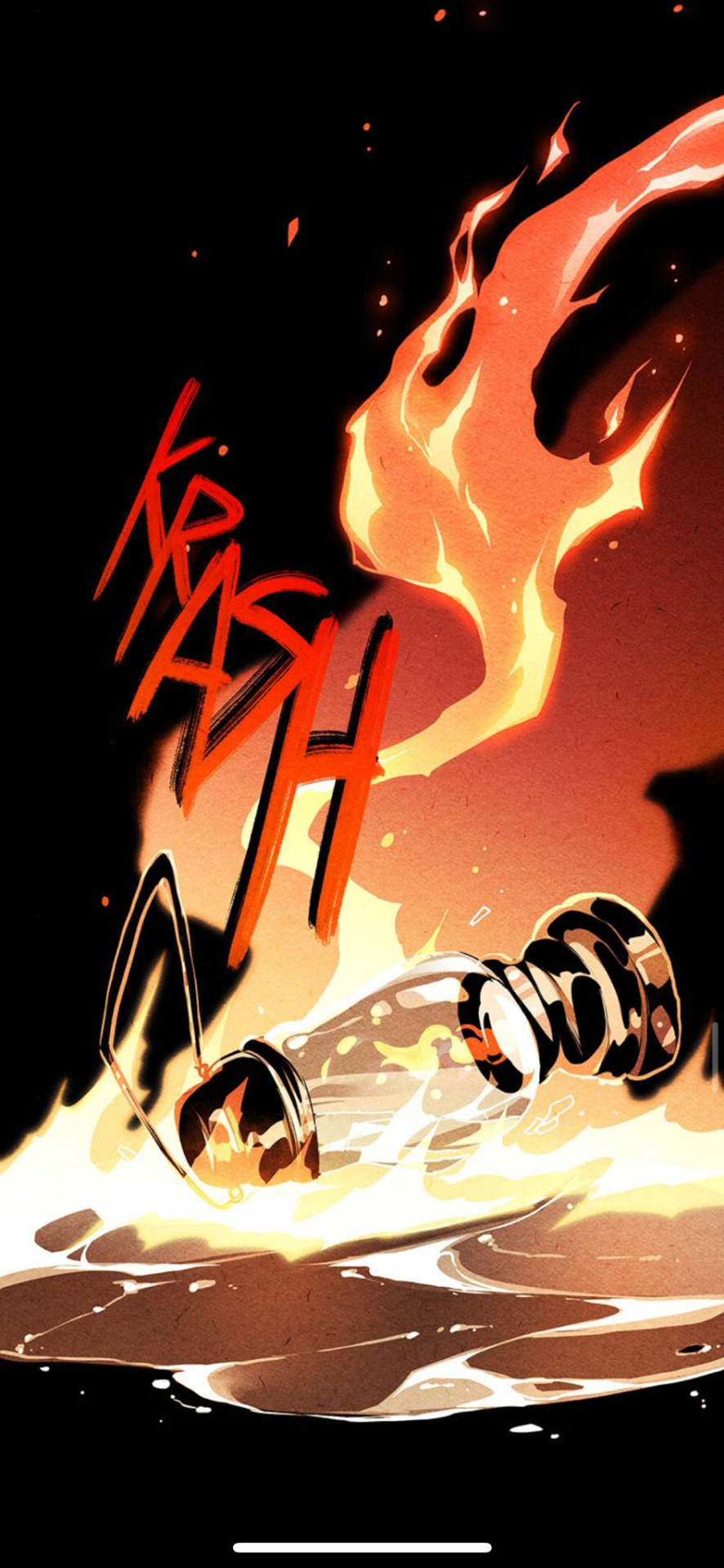
But that’s not it.
What if Lenore’s specter is not base on her actual death, which could have possibly been from illness or being shot through the head on their wedding day (go ahead and ask me about that theory), but it is supposed to relate or be based around her metaphorical death. THE DEATH OF LENORE BEFORE MEETING ANNABEL AND THE REBIRTH OF HER AS LEO AND/OR LENORE THAT HAD A CAUSE AND WILL TO LIVE BECAUSE OF ANNABEL.
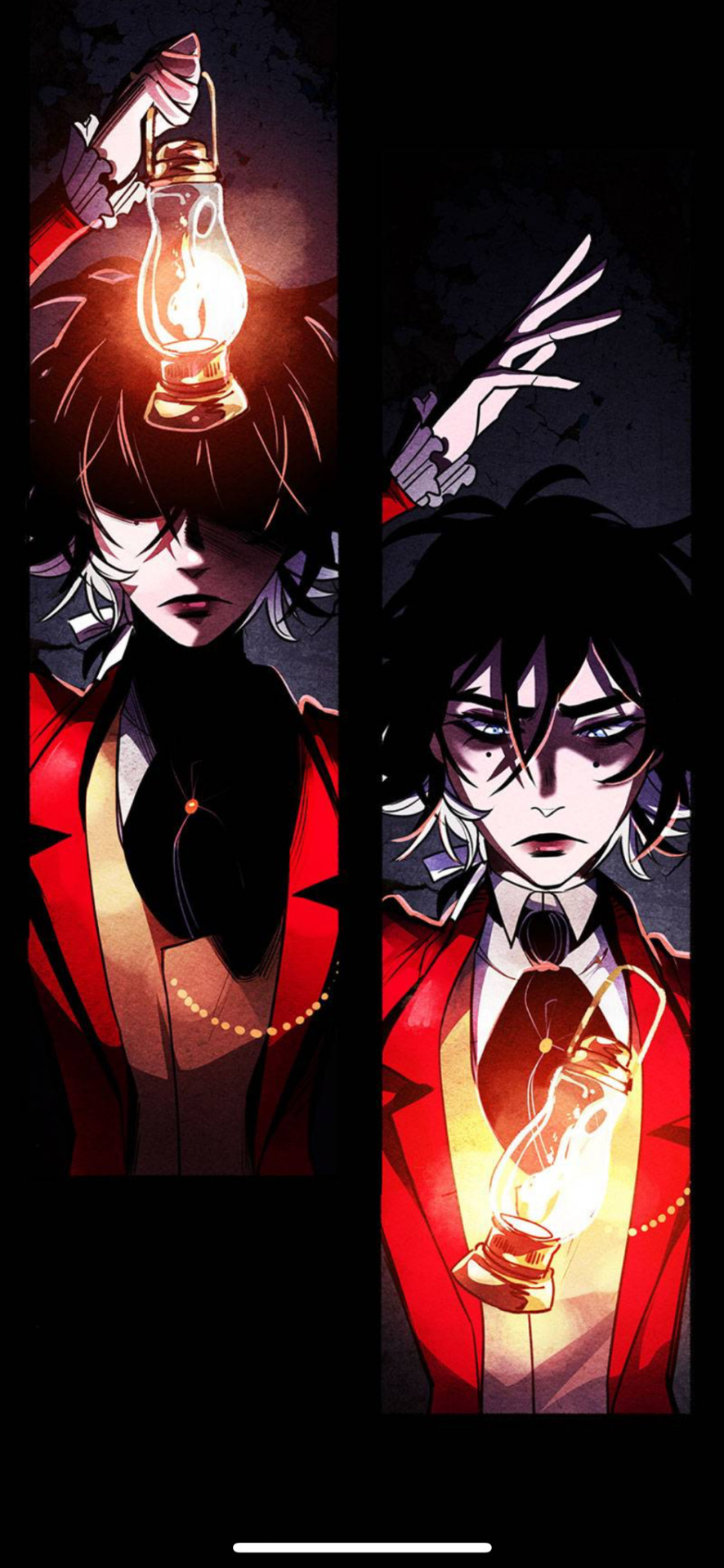
I see the shadow from the top left on Lenore’s face as the shadow of her past, the Lenore from before. Whom was dark and lonely and sad, all that. And the bottom right light as the light a new brightness of her new life. Her freedom.
AND
I think her specter will be related to the fire half. With a little more research, I found a Celtic/Gaelic goddess of fire by the name of Brighid, Hephaestus who’s also a god of fire, a dragon related specter due to the fire relation. But if we take the shot through the head-mental illness route, the Fay/fae of the British Isles or otherwise changlelings, whom are associated with mental disorders/illnesses, and due to Lenore taking up a new identity.
NOW
None of these are confirmed or true, this is just my headcannons and theories, please do not take them the wrong way. I love Nevermore and….most of the characters in it (cough cough Montressor) However if you do like these theories or have your own ideas or want to share, please do, send and ask or question and I’ll do my best to respond to them.
#annabel lee nevermore#lenore nevermore#nevermore webcomic#nevermore webtoon#white raven#headcanon#theory#please reply#i love them
138 notes
·
View notes
Text
Months and Magical Associations
In an attempt to kick off a discussion, here's something that's been rattling around in my head this week:
Does anyone else have particular associations for the calendar months? Not just for the full moons that fall within them for for the month itself.
For me, it's a sliding scale between This Month Is Optimal For This Thing and I'm Feeling A Vibe. I don't think it's based on anything other than my own preferences, the change of seasons, and certain holidays, although I do know there are some astrological connotations to the idea.
For example, in my mind, February is associated with light and candle magic. I figure this is mostly because of my personal connection to Brighid and the holiday of Candlemas, and also because of Groundhog's Day. (I grew up in Pennsylvania, so Punxsutawney Phil predicting the weather every year was a big deal for us.)
Some months are nebulous, while others are more definite. April is sort of vaguely about flower magic, while November is very definitely about creativity and inspiration.
So...anyone else have associations they'd like to share? There's no right or wrong answers, just curiosity.
61 notes
·
View notes
Text
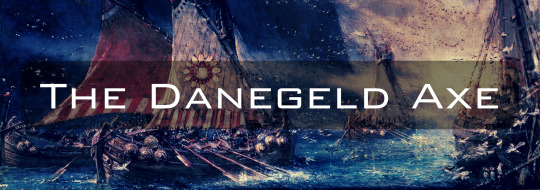
Part Eight: Summons
First Installment: Here.
Last Installment: Here.
Current Installment: You are here!
Author's note: Inspired by the 1950s short story "The Man Who Came Early" by Poul Anderson.
Red Sail Hall
Present Day
“Don’t you dare,”
Arthur’s hand froze over Cromwell’s skull as Rhys slapped his fingers away and down and snatched up bone, gripping the jawless head by the temples and pulling it from reach. Arthur went to take it from him, but they froze as Matthew rolled over from his place and bundled into a quilt. When he didn’t wake, Rhys snapped his gaze back to Arthur, and he found himself being dragged from the study with its electric faux fire and his son draped over the sofa, sleeping like the dead. They were suddenly in the hall, and he found himself pinned against the wall by his brother’s forearm. “You are not waking mother again.”
Arthur thrust the arm away but found he couldn’t move Rhys. He’d always been denser, compact and heavy like a lead ingot. “I don’t need to. I only need the skull and the spring.”
“For what? You delusional bastard. Do you fancy you can open a portal? You can barely make a curse box without me, much less this deep in your cups. And you are not sullying her grave with that man’s bones.”
“I have Alfred to consider. Don’t pretend you have the—”
“It’s my name he bears, you bloody bastard. How Saxon do you think Jones is? Hm? All of your children are as much us as they are you. Including Alfred.”
“Would you be reasonable?”
“No.” Rhys was very close, a spring force as he stood straight.
“Since when do you—”
“Since you rolled out of a bloody fairy ring and into my lap.” He prodded Arthur towards the stairs. “I am not letting you run off half-cocked because it’s easier to hurl yourself into a void than feel a fucking emotion. This isn’t you tossing yourself into a ship and running; this is a paradigm shift in the universe, you daft cunt.”
“Rhys—”
“May Mother strike me dead before I lose two nephews and a brother at once,” He was very close now, and sometimes Arthur remembered why there was a dragon on every flag his brother used. “You are a grown fucking man with four grown children. Take a fucking avomine, sleep more than thirty seconds, and we’ll make a move in the fucking morning. Go.”
Burial Mound, Cumbria
The Next Morning
Matthew knows he is dying when his uncle’s arms catch and hold him and he doesn't care. He has bled to death more than once. His shoulder had nearly been torn from his body once; a lobsterback cavalryman had broken an infantry formation he’d been caught in trying to run from the cannon fire. The bare faces of his arm bones saw the sky that day. He never ran away from a fight again. He was a century older when a gaping cavern of flesh appeared where his belly once was. A piece of shrapnel severed his spine and his jugular. And blasted a hole through his front. This is worse. This is much worse, but Alasdair kisses his head, and Matthew stands, blank and unmoving.
He has said goodbye to the two who were once his siblings, and he hopes the squeeze they gave him isn't the last good thing he ever feels. Now he is without them, standing before the ruins of a chapel. Trees soar to the sky, older than most in England, but spaced like the posts of a palisade. He can hear running water and whispers. Aunt Brighid is there. Father asks her something. Softer than he ever does, and she stands tall.
“I wove the spells into his cradle, I will not damn him to a grave so far from home. And the past is another country.”
His father is not often speechless, but the novelty is not enough to stop the bleeding. There is no trace of red, but he wishes it would be over, that it could all seep into the earth and let him go—anything to make the silence end. Even a scream will not pierce it now; it lays so thick over his thoughts. He is dying. Uncle Rhys lights a torch, then two more. Even here, lifting light, Matthew is redundant. He can only follow as his father and uncles follow their sister, lingering behind as she walks ahead. Alasdair, Rhys, and last, Arthur. Perhaps the first time in a thousand years his father has not led. His uncles carve sharp shapes into old indentations softened by exposure. His father cuts his hand and presses blood into the runes until it drips into the furrows and inks their carvings into contrast with the darkness. Matthew cannot read the shapes. His aunt sings, and he does not understand the words. As he always has, he clings to the tree line and watches others do their work. Something in him wants to die. Something in him knows his will, drowning in silence that will not let him hear his own voice anymore.
A woman’s figure appears. His father’s mother, but not his grandmother. Her time is too far gone for him to know her now if he ever did. Matthew’s hands are shaking now. They speak more words he does not understand. The Welsh vowels and little pieces of Scots Gaelic he can hear refuse to make any sense. He knows Gaelic the way he does his French, as natural as breathing, but he cannot put meaning to sound, and nothing makes sense. He wishes he would bleed to death already.
Then, Life.
His world broke open with a song. He doesn’t know which one. Something about a republic and grapes of wrath: the chorus is the laugh of North America, showing teeth and soaring like the sky. Alfred. A branch nearly takes his head off as he smashes through the trees towards the sound. More laughter. His world was born from a bolt of it centuries before. The pool of a spring lap at the stones of the edge, and the water sings in his brother’s voice for a moment before Matthew realizes the sound is below the water. There is no bottom of the pool; the stone edges descend into a black abyss. He would not have understood the depth of it even a moment before Alfred cut himself free from their reality. Kneeling, he touched the edges of the stone and knew the rounded channels locking into place were his uncles doing, the same dry stone construction of a broch.
“Mattie,” Alfred spoke, only barely damped by the water. A week without Alfred and he'd lost more love than Francois had given him in 150 years. Just a thread of it wound around his heart, hearing his name on the piano notes of his brother's laugh and pulled him forward.
He dove.
#hws england#hws canada#my writing || cacoethes scribendi#the dangeld axe to grind: the viking age time travel au
66 notes
·
View notes
Text
Imbolc
Let me preface by saying, even if you don't follow the wheel of the year, utilize the prompt here for whatever holiday you do celebrate, if you do! If you only recognize the equinoxes and solstices as days, use this prompt outline for those!
So for each holiday we’ll be making a masterpost with a prompt below it. :) We’ll just follow the year this way and do them as they come around. First up is Imbolc, circa Feb 1-2. Also known as Candlemas or to some, Brighid’s Day, Imbolc is a time of planning for the year ahead, preparing for the challenges ahead, setting goals, a time of light, hope and healing. Different cultures and spiritualities and different witches will celebrate or not celebrate this day. For those of us Pagans who do, here’s a bunch of posts. (None of these are mine, these are simply pages I’ve gathered from Tumblr at large to share here.All credit goes to the individuals who made the posts!)
Imbolc Posts on Tumblr
Playlist
About Imbolc
Ways to Celebrate
Imbolc Tea
Imbolc Bread
Imbolc Bath
History of Imbolc
Outside Tumblr Sources
Wikipedia
Celtic Connection
ThoguhtCo
Newgrange
History
Wild Hunt
And these all came from simply searching Imbolc over the years. (Or any of the other esbats/ sabbats/ holidays!) The internet is a fantastic resource, use it well. Look up history books, papers written by historians, not just the fluff pieces with lists of info. Look into the history, that’s where the truth of the traditions we see today are found.
The Prompt!
Okay! Make a new page, solely for Imbolc!
Write out a description of the holiday. What is it? When is it? How is it traditionally celebrated? Why were things celebrated the way they were? What are the things that this holiday represents and stands for? This is the meat and potatoes of the holiday. Any and all bits of info aside from this are just the seasoning. Mine is a few small paragraphs about the holiday itself.
Now make some lists. What are the colors used to decorate for this holiday? What are some incense/ oils/ candle scents that are commonly associated with this day? Gemstones? Herbs? Is there a moon phase or particular god/goddess associated with this holiday? What about animals? Flowers? Were there any traditional offerings left out on this holiday? And what foods were made on this day?
What are some of the activities you can do to celebrate this holiday? And what about magic and rituals. Are there any specific kinds of magic to perform on or around this day? Are there any poems or blessings associated with this holiday?
That’s a lot of info, I know. But now for the second part of the holiday prompt!
Make it your own!
Now, given all the information you’ve gathered, make your own small ritual to be performed on Imbolc. To do this, I suggest a scrap paper to brainstorm on. Here’s some things to keep in mind and help write out your ritual.
What is the theme/ purpose of the ritual? (Healing ritual? Cleansing? Renewal of intentions? Welcoming the light?)
What are the tools you’ll use and what is the purpose/ association it has? (candles, athame/ sacred blade, incense, gemstones etc)
What power(s) are you calling upon for the ritual and why? (elements, deities, sun/ moon, personal power, etc)
How do you set it up? Is there specific placement of the tools? Direction to face when calling the above powers? Do you cast a circle? Or do you simply light a candle and bow your head in a moment of silent prayer/ meditation?
Good Luck and Happy Crafting!
-Mod Hazel
43 notes
·
View notes
Text
For those who are curious, this is what I mean when I say my personal pantheon is a mix of historical, unrecorded, and constructed deities.
In this context historical means there is a general consensus this deity was worshiped in the past. There is archeological or historic evidence, no matter how little.
Unrecorded are deities forgotten through time. They were once worshiped, but that was so long ago even their name is forgotten. Perhaps on day we'll find evidence, perhaps not.
Constructed are deities that are of my own creation. Whether completely from scratch, or through adding to existing mythology of different deities.
When it comes to the Gleaming Grove - my personal pantheon, it is like this:
Hooded Hunter, both historical and unrecorded, Cernunnos
Rootwoman, historical, Baduhenna
Wildmother, historical, Nehalennia
Wayfarer, historical and unrecorded, Elen of the Ways
Sanctuary, historical, Nemetona
Hearthlight, historical and unrecorded, Freyr
Trickster, historical, Loki
Iridescent One, historical and constructed, Frigg-Frija
Shining One, historical, Frigg-Frija
Lady of Flowers, unrecorded, Eostre
Amber Forge, historical, Brighid
The Healer, historical, might be Eir or Airmid
Ashkeeper, unrecorded
Veiled Silence, historical, Holle/Holda
Crescent Huntress, historical, Jecha
Earth Mother, historical, Herta/Hertus
Crowmother, historical, the Morrigan
Void, unrecorded
Moon Mother, historical, Mona
Star Sister, unrecorded
Lotweaver, unsure
Wordweaver, constructed
Clothweaver constructed
Because there is so much we don't know of most of the historical deities that I honor, I rely heavily on my interactions with them, as well as UPG. It is why I started calling them by titles, instead of names, to make sure it people looking for historical "facts" would not be led astray.
However I am doubting this decision now, and may start refering to them by name again. We'll see.
[updated 13 September 2023]
#deity#pagan#paganism#paganblr#personal pantheon#gleaming grove#cernunnos#nehalennia#baduhenna#dutch deities
56 notes
·
View notes